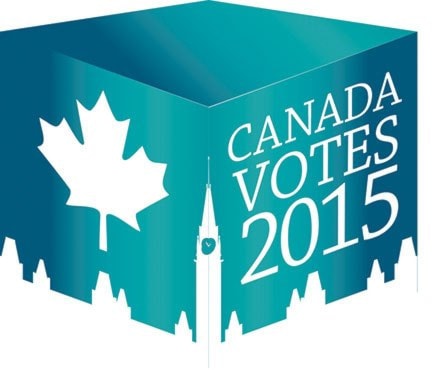Elections Canada estimates 3.6 million people voted during advance polls, up 71 per cent from advance polls in 2011, with Victoria ridings seeing some of the most voters in the country.
“This is in a way potentially a good problem to have, at least if you take the classic argument that the system works better if more people are weighing in,” said Dr. Jamie Lawson, associate professor in political science at the University of Victoria.
However, he adds, “the question could be raised: Are those people who are going to vote anyway and chose to do it on Thanksgiving weekend rather than on the 19th?”
The advance poll brought a shock to one Saanich couple.
Retiree David Price and his wife have lived at the same Royal Oak address since 1999 and voted in every election since then. They’ve previously received their voter registration cards in the mail but this year nothing arrived but an election card for someone at their address whom they’ve never heard of.
When they attempted to vote at an advanced poll in Royal Oak on Saturday they were told they were not registered. Through Elections Canada’s Saanichton office they discovered they are registered, but only in Quebec, where they lived 17 years ago.
“How could we get into this situation?” Price asked. “We’re off the list, yet we’ve voted faithfully every single time. We’re annoyed. We must now go through the tedious process of proving who we are.”
Greater Victoria had some of the highest turnouts for advance polls across the country, with 17,501 casting a ballot in Victoria, 16,236 in Saanich-Gulf Islands and 16,358 in Esquimalt-Saanich-Sooke.
The high numbers, however frustrating for some voters, could be a result of many things, Lawson says.
“One thing that could mean a higher turnout for both the advance polls and the regular one on the 19th is just how tight this race is and how volatile it’s been. … It’s been difficult to figure out people’s overarching pattern,” Lawson said. “It’s rare for three parties to be tied for so long in our country. It’s also the case that, because we’ve had a single government in power for 10 years now, people who disagree with the governing Conservatives are growing in their sense of frustration.”
Modern technology could be another reason for the uptick, as social media feeds on Thanksgiving weekend filled with voting “selfies” and updates.
“There have been a number of different strategies to raise the total vote and getting people to think about voting in a co-ordinated fashion,” Lawson said. “People have been going to the advance polls voting and then saying to their social network, ‘Hey guys, I voted. You should go vote too.’ … It works better if you’ve got an advanced poll to do that rather than break the news to people in the morning (of general election day).”
Convenience and the lengthy campaign period could also play a role.
“We’ve seen over the past few years, concern both within Elections Canada and beyond, about declining voter participation and that’s part of the reason we’ve seen a turn to advance polling as more than just the right to vote if you have an unavoidable obligation. It’s new to think about advance polls as just another way to vote without having to have an excuse offered.” Lawson said. “I think for people who have a choice in the matter (of when they vote) it may be a way of saying, ‘I’ve made my decision, I’m done here and no one’s going to persuade me of anything different in the next six days.’”
The numbers leave more questions than answers about what voting day will look like Oct. 19.
“There have been times when turnout election day was incompatible with the trend at the advanced polls and disappointed people. … We’ll just have to see,” he said. “Tightness of the race is maybe an even better predictor of whether we’ll have a heavy turnout. Historically it’s often been the case that a tight race draws people out.”
